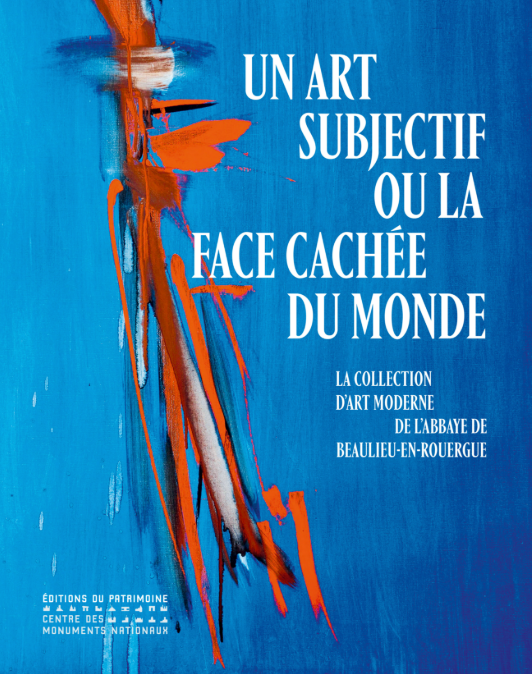Modern art in a medieval setting
- Jacqueline Hurley
- Aug 28
- 4 min read
10km from my home in the quaint village of Ginals, situated in the Tarn-et-Garonne region of Southwestern France, lies the medieval Abbey of Beaulieu-en-Rouergue. This magnificent Cistercian abbey, originating from the 12th century, now draws art lovers and historians worldwide to its gates. The Abbey has gained such renown that it has become France's second most significant art gallery, following the Louvre in Paris.

How did a medieval Cistercian abbey and its Gothic Church transform into one of the world's premier art galleries?
The tale is distinctive. Following a turbulent and violent history during the medieval era, the abbey changed ownership many times and eventually fell into disrepair around 1872, remaining in ruins until 1960.
It was then that the Abbey transitioned from a religious seat to a world-renowned art gallery. In 1953, contemporary art collectors Geneviève Bonnefoi and Pierre Brache discovered the abbey and purchased it in 1960. Over the following decade, they meticulously renovated the old ruin. During this time, they were intrigued by the unusual decorative symbols found in the chapter house of the Gothic church. These motifs closely resembled the modern art that Pierre and Geneviève had been collecting for about ten years. Beaulieu Abbey became the ideal setting for their avant-garde collection, with the works regularly displayed in exhibitions held in the church.

In 1973, Pierre Brache and Geneviève Bonnefoi separated donating part of their art contemporary collection and the site to the Centre for National Historic Monuments.
The abbey continues to host important exhibitions and visitors.

Modern art in a medieval setting
The Beaulieu-en-Rouergue Abbey features a newly designed museum within the abbey lodgings, constructed around 1675 on the medieval building's foundations. This two-story area was previously inaccessible to the public.
The design is understated, reflecting the lifestyle of the Cistercians who established the abbey in the 12th century. Visitors can explore nineteen themed rooms, including five graphic arts cabinets, in addition to the rest of the site (church, chapter house, cellar, rose garden, etc.). The initial rooms were once the salons of the 17th and 18th centuries, with preserved plasterwork and fireplaces. The monument's history and the Cistercian monks' way of life are showcased. One room honours Geneviève Bonnefoi and Pierre Brache who both rose from humble beginnings to higher social status following World War II, during a time of significant economic expansion.
During the intellectual and artistic vibrancy of the post-war era, the Bonnefoi-Brache couple acquired artworks that resonated with them, free from any speculative intentions. They amassed a genuine collection that now serves as a testament to the painting of the Trente Glorieuses. The patrons supported emerging artists who were financially accessible, such as Degottex, Wols, Hartung, Judit Reigl, Vasarely, and Vieira da Silva.
The Bonnefoi-Brache collection consists of more than 1,300 works, including 203 paintings and nearly 500 drawings. There are also sculptures, works of primitive art, and a rich archive collection, part of which is on display in the Library.
A painting by Fautrier, titled Otages, is part of a series of portraits of individuals who were executed, painted secretly during the Occupation, and described by Malraux as the “first attempt to strip away contemporary pain.” He remarked that “modern art was born on the day when the idea of art and the idea of beauty became disjointed.”
Dubuffet is prominently featured, with a room dedicated to him in the new museum layout, as are Michaux and Hantaï. Dubuffet was a humorous and very generous personality who donated works, some specifically created for the couple. Following the artist's death and in accordance with his wishes, Pierre Brache became a member of the board of directors of the Dubuffet Foundation.
Although it is now typical to see heritage sites alongside contemporary art, Geneviève Bonnefoi and Pierre Brache were trailblazers of what was once a new practice.

The Legacy
In 1998, Pierre Brache designated Geneviève as his heir, granting her the artworks he retained after their separation. Geneviève passed away in 2018, bequeathing her entire estate to the Centre des Monuments Nationaux.
The artworks were catalogued, and a significant renovation project was initiated to showcase the modern art collection within the abbey. Entitled "Un art subjectif ou la face cachée du monde La collection d’art moderne de l’Abbaye de Beaulieu-en-Rouergue", it features over 256 pages with 200 illustrations and is available for purchase from the Centre des Monuments Nationaux for 42€.

Surrounding the museum is a vast landscaped park that includes a garden with a thousand roses, enchanting visitors. Throughout the year, temporary exhibitions present pieces from private collections that complement the Brache-Bonnefoi collection exhibited at the abbey. Additionally, the Beaulieu Cultural Association hosts lectures.
Current exposition showcasing modern art in a medieval setting (August 2025) - Haramburu, the painter's path
Jacques Haramburu (1934-2013) was a distinctive artist who chose to reside in the Prefecture city of Montauban in the Tarn-et-Garonne to pursue his art and live in seclusion.
Discovered by Geneviève Bonnefoi, she curated the “Cheminements” exhibition at the Abbey of Beaulieu-en-Rouergue in 1984, entirely dedicated to him. She later included some of his works in various group exhibitions: New tapestries, embroideries, textile sculptures, and festive hangings in 1987; Empreintes d'un territoire II (Imprints of a Territory II) in 1994; and Empreintes d'un territoire III (Imprints of a Territory III) in 2006.
A close relationship formed between the artist and the collector, with the Abbey of Beaulieu displaying his work and large-format pieces. Currently, the Brache-Bonnefoi collection contains 23 of Haramburu's works (drawings, sculptures, ceramics, paintings), some of which are featured in the permanent exhibition.

It's amazing to have this world-class monument and art gallery displaying modern art in a medieval setting so near my home. Visiting this stunning Abbey provides endless inspiration, and it's a privilege to view renowned artworks and discover lesser-known local artists. What galleries are near your home? I'd love to hear about them!







Comments